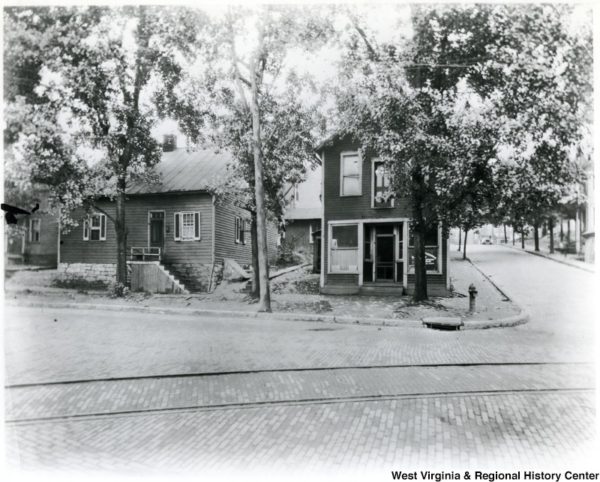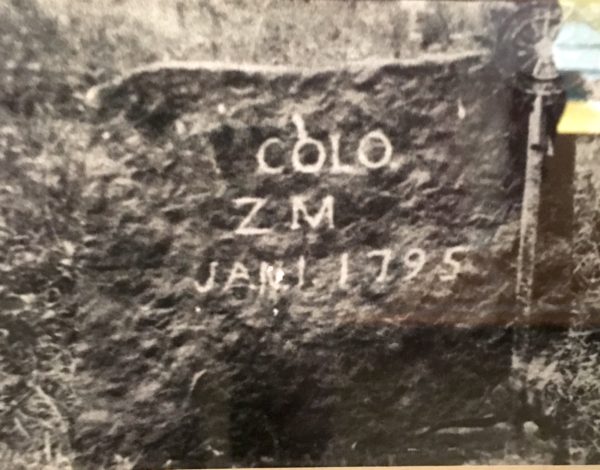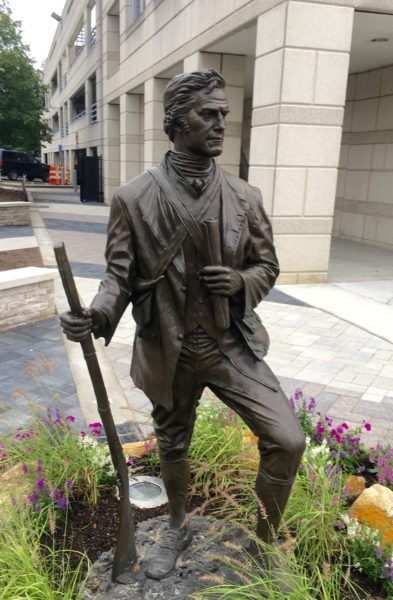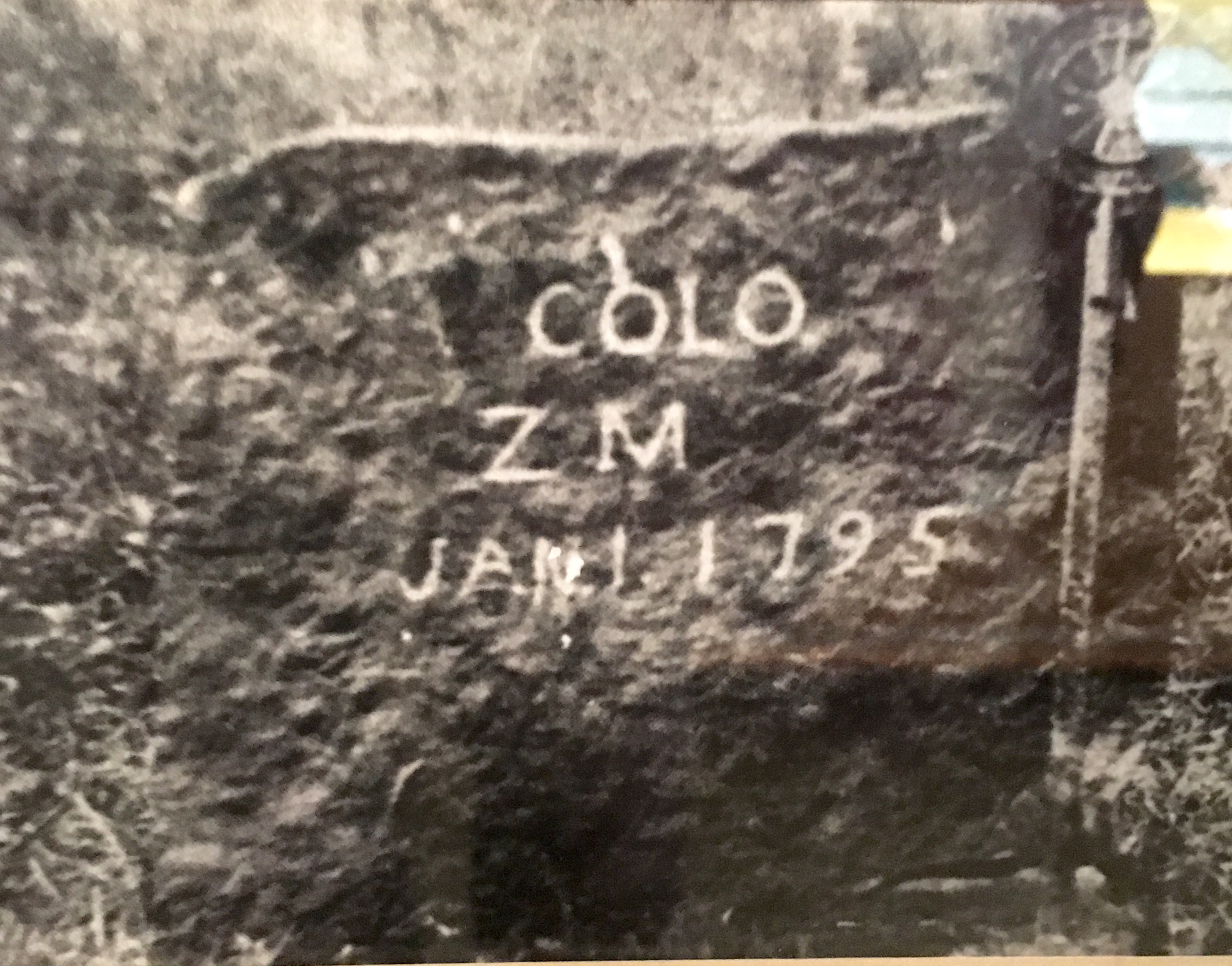Western Virginia was the wild west when Zackquill Morgan was born in Berkeley County in 1735. Those who ventured the risk of settling on the frontier often did so with no small degree of peril and anxiety. Settlements were sparse then, and the threat of attack from regional Native peoples was often a concern. Among those who struck out to establish themselves was Morgan Morgan, a Welsh immigrant who moved his family there in 1731. Tradition holds that Morgan Morgan was the first permanent white settler in what became West Virginia. His son Zackquill was born seventh of eight children, and their family became noted for their civil and military leadership on the eighteenth century frontier.
In his early twenties Zackquill became a fighter, and his forays in military service continued over the next twenty years. When French forces built Fort Duquesne at the forks of the Ohio, he and his brother David joined the ill-fated British expedition under Major General Edward Braddock. On a ridge above the Monongahela River near Pittsburgh, he witnessed the 900 casualties inflicted on their men by the combined French and American Indian forces. Three years later, he returned to the forks serving under General Forbes to successfully reclaim the region for the British. His experiences during the French and Indian War would not be the last he would see of violence and loss, and it prepared him for the day he would lead men in a fight for a new country.
When Zackquill and his brother chose to move further west, he decided to place his cabin and farm near the mouth of Decker’s Creek along the Monongahela River. Although accounts vary, it appears he obtained this land by tomahawk claim in 1766 or 1767, making him among the first white settlers to resettle the area after the unfortunate Decker settlement was destroyed by Delaware and Seneca warriors in 1758. Here he worked to improve his land and raise his family until he was called upon to serve as growing tensions escalated into a war for American independence.

Morgan’s cabin (left) that stood at the corner of University and Fayette Street. Photo credit: WV&RHC
Zackquill became a warrior once again, this time as an officer and leader of men. During the Revolutionary War he was appointed as “County Lieutenant” of Monongalia County with the title of Colonel. “Colonel Zac,” as he was often referred to, commanded about 600 men during the war as part of the Virginia Minute Men. Among other service, he fought as part of General Gates army at the Battle of Saratoga in 1777, where he lost nearly half the men under his command. Records indicate that he served with distinction throughout the Revolutionary War.
Military service was often compensated with grants of land, and Zackquill received 400 acres near Decker’s Creek that was surveyed in 1781. In 1785, he requested that the Virginia General Assembly establish a town from 50 acres of his land, and an act was created that read as follows: “Be it enacted by the General Assembly that 50 acres of land, the property of Zackquill Morgan, lying in the County of Monongalia, shall be laid out in lots of half an acre each, with convenient streets which shall be established as a town by the name of ‘Morgan’s Town’.” The streets of Morgantown today still closely follow the original grid as laid out by Zackquill Morgan.

The original slab marker, which reads “COLO Z.M. Jan. 1, 1795” is now on display at the Morgantown History Museum on Kirk Street. Photo credit: Travis Henline
It is interesting to note that Zackquill also opened Morgantown’s first tavern, or “ordinary,” in 1783 and that his home served as the Monongalia County courthouse for a few years. When he died in 1795 at age 60, he was living in a house on Front Street. He was buried with family and friends at a country cemetery at Prickett’s Fort. In later years, the rough sandstone slab that marked his grave was replaced with a monument. The original slab marker, which reads “COLO Z.M. Jan. 1, 1795” is now on display at the Morgantown History Museum on Kirk Street. Zackquill Morgan fathered fourteen children with two wives, and his numerous descendants still gather annually at the Morgan family reunion.

A statue of Zackquill Morgan now stands on Spruce Street in Morgantown by local artist Jamie Lester. Photo credit: Travis Henline
Travis Henline received his M.A. in history at WVU, and is the Executive Director of Main Street Morgantown.


